Affiliate disclosure: This post may contain affiliate links. Please see our Privacy Policy.
Honeyberries, also known as haskap berries, are a type of fruiting honeysuckle that tastes like a cross between a blueberry and a grape. For cold climate gardeners, honeyberries are a dependable source of early spring fruit, ripening about three weeks before strawberries. Haskaps are extremely cold hardy as well, growing and producing fruit where winters hit 40 below.
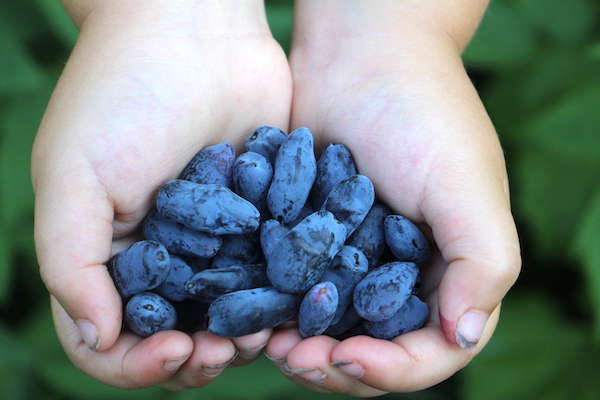
Honeyberries (Lonicera caerulea) are also known as haskap berries, blue-berried honeysuckle or sweetberry honeysuckle. Though they’ve been grown for hundreds of years in cold climates like eastern Europe, honeyberries are become especially popular in permaculture gardens because of their low maintenance needs. They’re cold hardy, fast-growing and tolerant of poor soil.
Knowing they’d be perfect for our northern climate, I wanted to plant honeyberries for years before I finally found a source for honeyberry plants. Our soil is shallow, clay-filled and wet, and winters are long up here in Vermont (zone 4).
When I finally found honeyberry plants, I was very pregnant, and just a few days shy of delivering my first child. I bought them anyway, and they were planted just a few days before my daughter was born.
She’s always been in the 99th percentile for height, but these vigorous plants still outpaced her. Four years later, they’re around 5 feet tall now, and she can’t quite reach the highest fruits.
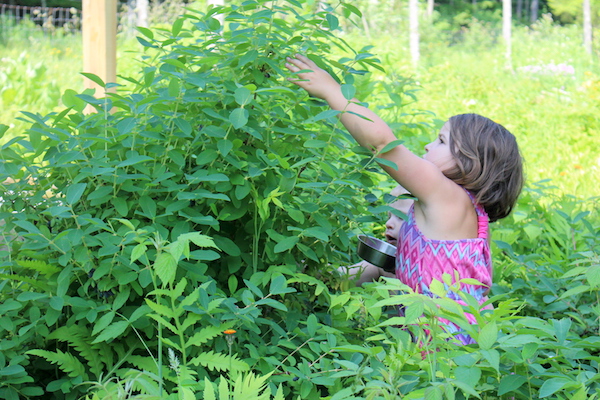
Honeyberry plants take begin bearing early, often in their second spring. Crops are light at first, as the plants put most of their energy into growing into vigorous bushes. When they do begin to bear, honeyberries can be quite prolific.
It all starts with small, honeysuckle flowers in the early spring. They look like honeysuckle flowers because that’s what they are. Honeyberries are fruiting honeysuckle bushes, so you get the benefit of beautiful flowers as well as fruit.
They’re a favorite of our native bumblebees, and the early blossoms provide early spring nectar sources when they’re desperately needed by pollinators.

Though honeyberry plants bloom about 3 to 4 weeks before our last frost, I’ve never noted frost damage or decreased crops. I assume the blossoms are frost tolerant as an adaptation to many years growing in harsh northern climates. While late frosts will destroy our apple crop some years, honeyberries have been very dependable.
Dependable early fruit is a big deal for us, as someday our goal is to grow all our own fruit for a year-round supply. We successfully root cellar apples already, but by early spring, our palates are craving the first tastes of soft fruit. Strawberries don’t come in until late June or early July, so honeyberries are a big deal around here.
Though they’re often quite tart, especially when under-ripe. The first fruits of spring are excused for their tartness, and I can understand how they would have been valued in northern climates centuries ago before international shipping.
Tart or not, I can’t keep the little ones off them.
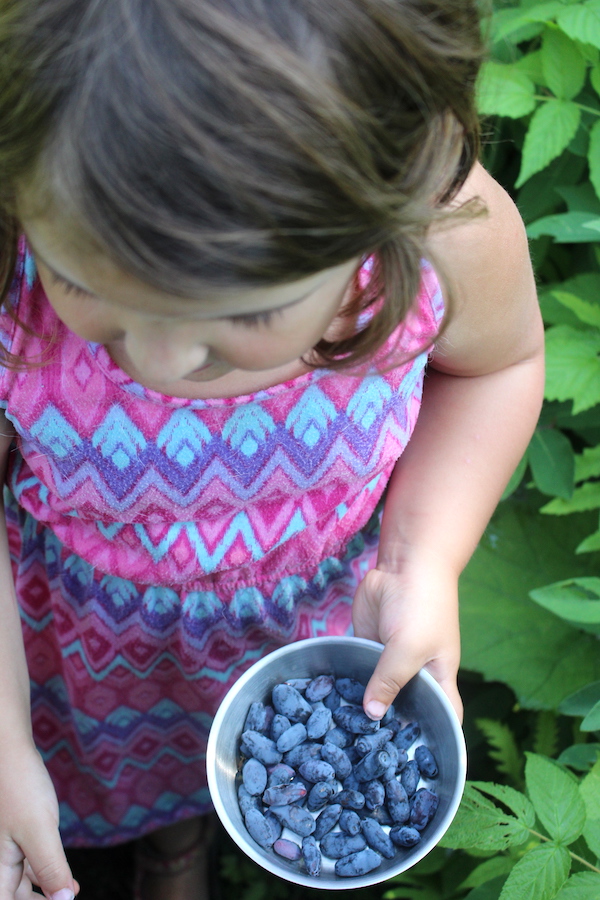
How to Grow Honeyberries
Honeyberries are generally grown from transplants that were propagated from cuttings and then rooted in a pot for 1 to 2 years before planting. While we’ve successfully propagated blueberries and grown elderberries from cuttings, I haven’t been able to get honeyberries to root. All our plants were purchased either from local nurseries or as bare-root plants from online nurseries.
I’ve read that honeyberries can also be started from seeds, but I haven’t yet tried growing them that way.
Either way, once you have a few young honeyberry plants, they’re surprisingly easy to grow with minimal care. Here are all the specifics for growing your own haskaps.
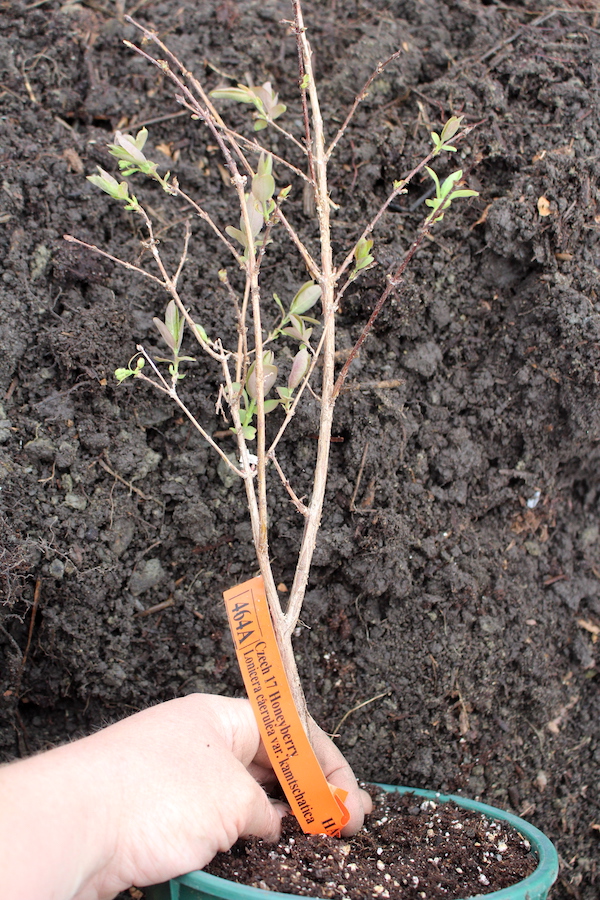
Hardiness
While hardiness varies by variety, honeyberries grow best in zones 2, 3 and 4. They need a cold winter dormancy each year. Some varieties will grow and produce in climates as warm as zone 8, but for the most part, they were bred for cold weather and that’s what they need.
Soil Type
Honeyberries aren’t picky about soil type. They have been known to do well on clay soils where other crops have failed. Our plants are a prime example, growing in about 6 inches of mediocre topsoil above a hardpan layer of dense clay. Under ideal conditions, they’d grow in loam with a pH of about 6.5.
Weeding
While they don’t require particularly deep or fertile soils, they do benefit from a heavy supply of leaf mulch. Honeyberries are shallow-rooted, with the majority of their roots in the top 5-7 inches of soil. Weeding and cultivating the topsoil around their base can damage their roots, and they can be stunted by over-competition with weeds.
Keeping roughly 2 inches of leaf mulch around each mature plant will help prevent weeds, and promote a healthy root system.
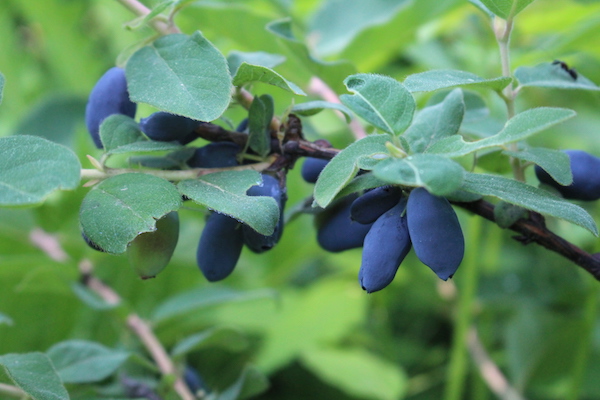
Pruning
Honeyberry fruit is produced on 1-year-old wood, and the highest yields come from strong, vigorous 1-year-old branches. Honeyberries should be pruned when they are dormant in the winter months, removing any dead branches.
For the first 5 to 7 years, allow the plant to grow as much as possible. Mature plants can be between 3 and 6 feet tall depending on the variety, and it takes a while for them to achieve full size.
Once the plants are full size, prune them annually to maximize 1-year-old wood and remove old or damaged branches. Older branches can shade new growth, and prevent good crops. By pruning the bush back, you’re encouraging sunlight penetration to all the productive branches.
Avoid cutting back the tips of branches, as that’s where the most fruit production occurs.
Fertilizing
While the plants are hardy, and vigorous in mediocre soils, they produce best with fertilizer or organic manure.
If you’re choosing to apply fertilizer, a balanced 10-10-10 fertilizer is a good choice. Apply in very early spring or fall. Otherwise, go with 2 inches of well-rotted manure per year.
This past spring, we applied fish emulsion fertilizer to honeyberry plants right at bud break. The fruit set was out of this world, and we’re harvesting 4x as many berries this year as ever before. While we’ve always gone with heavy mulch and compost in the past, I think we’ll stick with this fish emulsion routine in the future.
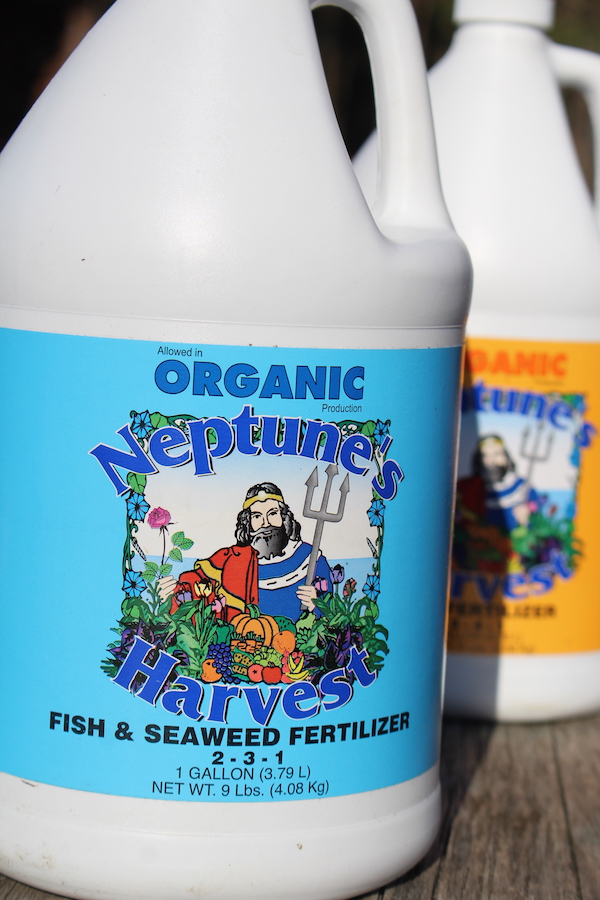
Pollination
The one place where honeyberries are particular is in pollination. To produce fruit, you need at least 2 different honeyberry cultivars. Ideally, you’d have at least 5 bushes planted near each other, with as many different varieties as possible. Here’s a really handy chart that covers honeyberry pollinator compatibility, and tells you which varieties are good pollinators for others.
They’re bee-pollinated, and with their early flowers, they provide much-needed food for native pollinator bees. A favorite of bumblebees and ours are full of buzzing bumbles in the early spring.
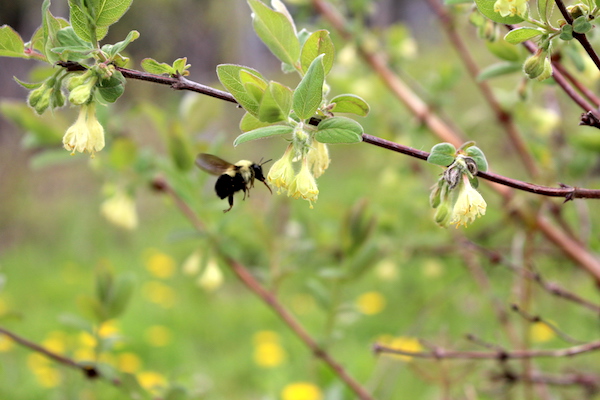
Harvesting Honeyberries
One of their main benefits is the fact that they fruit so early in the spring. They produce around 2 weeks earlier than the first strawberries. They’ll fruit for 2 to 3 weeks a year, and after that, they’re attractive bushes for the remainder of the summer.
Unlike other perennials, honeyberries can be productive just one year after planting. They go on to produce berries for 30 years or more with benign neglect for management.
The berries are easy to pick with a gentle hand. A bit softer than blueberries, but firmer and more durable than raspberries.
Pick them by hand into a basket and use them within a few days. They tend to hide under the leaves, meaning that they’re overlooked by birds, but they’re at a perfect angle for small children to harvest.
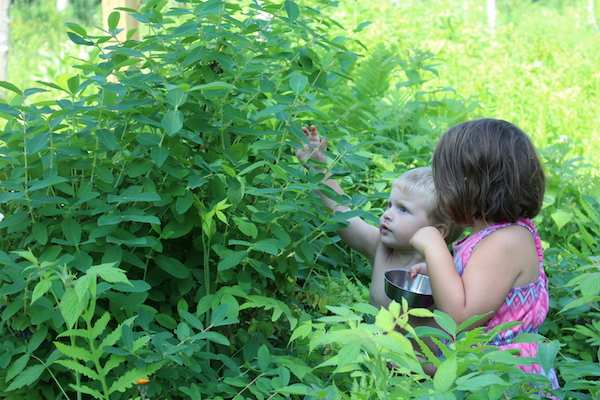
Honeyberry Recipes
Honeyberries work well in place of blueberries in most recipes. Keep in mind they’re much softer, and they break down quickly in cooking.
If making honeyberry pie, combine them with a firmer fruit (like pears or apples) so that the pie doesn’t become soup in a pan. For muffins or bread, choose a recipe using strawberries because they will bake up more like those soft fruits in cakey baked goods.
Our favorite way to use honeyberries is in a simple jam. Mix equal parts berries and fruit (by volume) and simmer until the jam gels when tested on a plate kept in the freezer.
Experienced jam makers will know what this looks like, as the bubbles in the pot change when the jam is almost finished. They’ll take on a glossy sheen and the whole pot will change over within seconds.
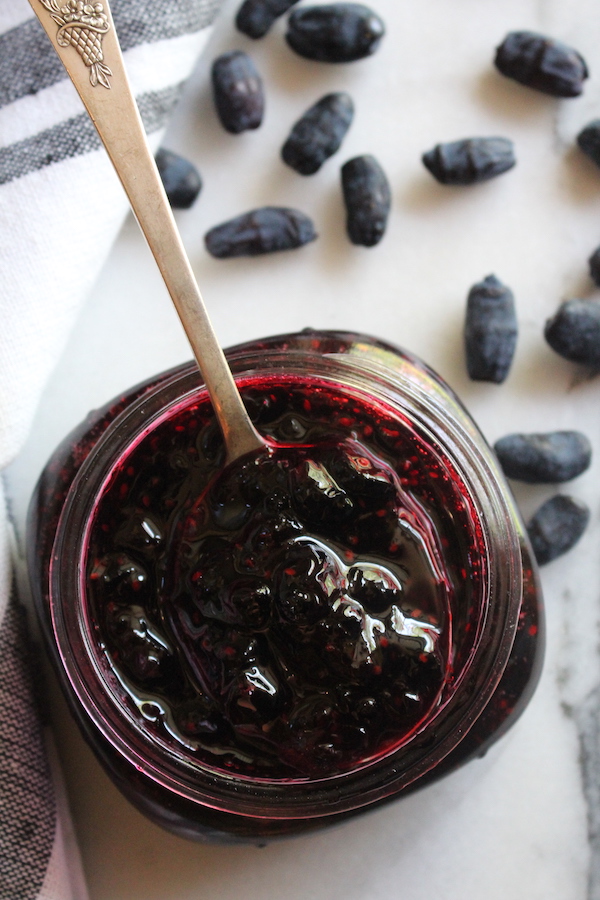
Haskap jam can be canned just like any other, by allowing for 1/4 inch headspace and processing in a water bath canner for 10 minutes.
Beyond jam, this year’s harvest is going into simple shortcakes and maybe a honeyberry ice cream. Similar to blueberry ice cream, but these berries are more tart and take a bit more sugar. They also have more flavor in the finished ice cream in my opinion, and honeyberry ice cream is fast becoming one of my favorites.
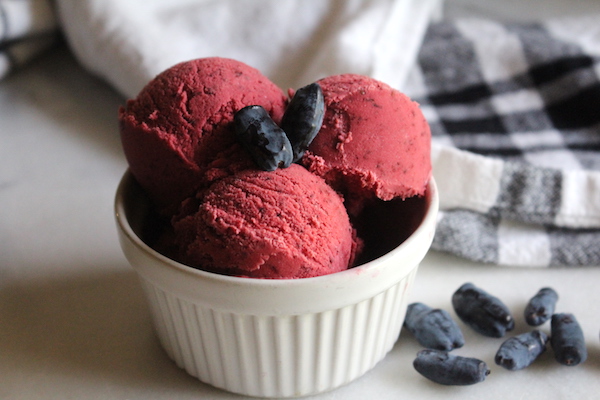
Other than preserves, it can be hard to find specific honeyberry recipes online, but I dug up more than 30 honeyberry recipes for you to try. Everything from simple desserts like Honeyberry Pear Crisp, all the way up to a more advanced Honeyberry Wine.
How are you going to use your honeyberries?
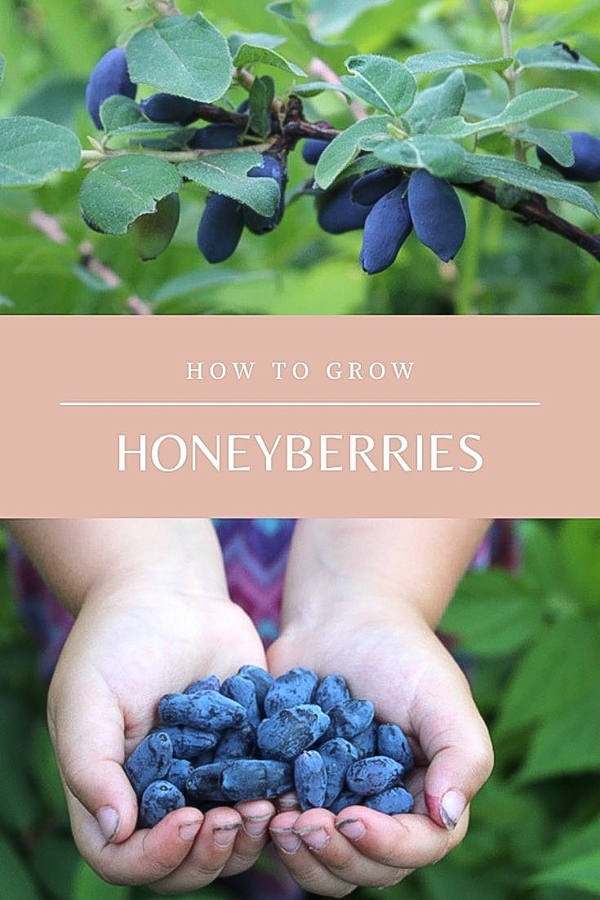
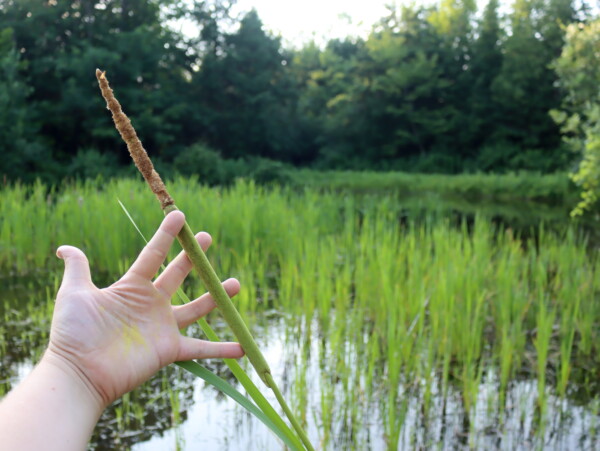
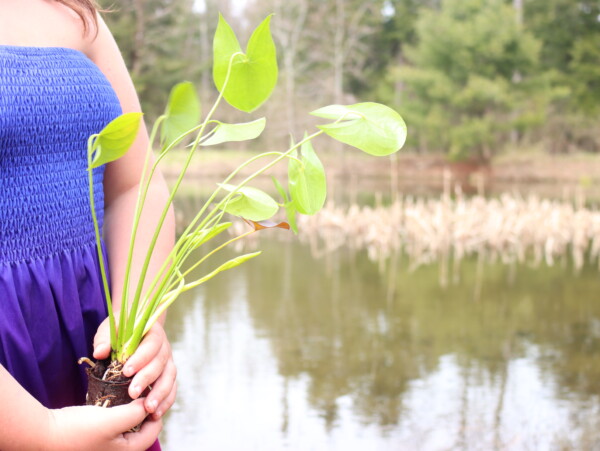
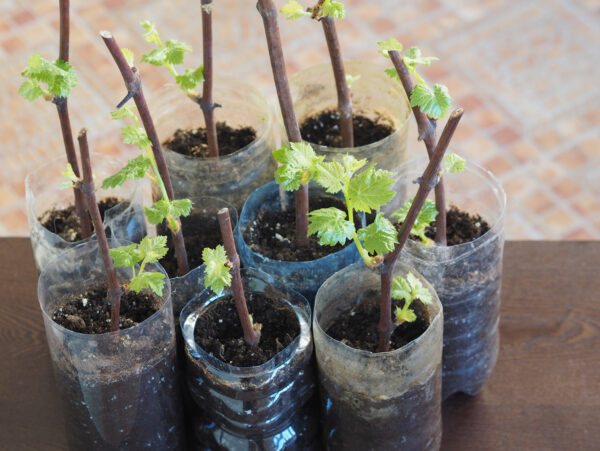
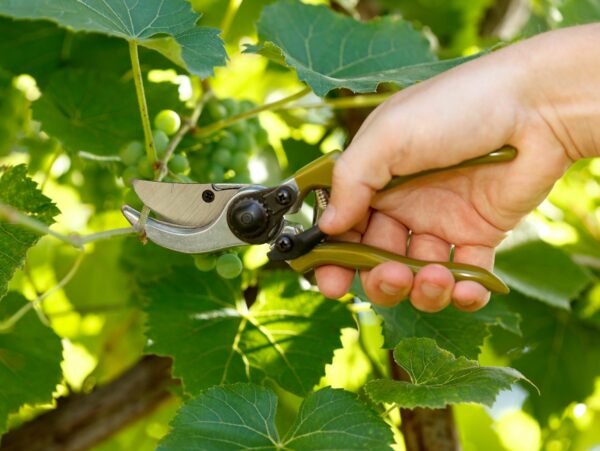










Ashley, thank you so much for all you have taught me over the years! I haven’t tried hascaps but looks forward to trying them one day. On another note, while foraging today I found something that seems to be a wild oregano or marjoram…do you happen to have any knowledge about a plant like that in zone 6 upstate New York? Thanks for your time!
Yes, we do have a wild marjoram that grows here. This video shows more about it: https://www.youtube.com/watch?v=LPT_kGErfUk
There are other plants in the mint family that look similar, but most are edible (still, make sure you ID it). Mint family has square stems, so pinch one off and check. Wild versions have really variable flavor, and some are quite bitter, but some are excellent.
Thank you very much for giving me a direction to research more. The reference you sent me is helpful. 🙂
Is it possible to make Jelly instead of jam from honeyberries? If so is there a recipe. I have family that can’t eat skins or seeds due to health issues. I only find jam recipes
Yes, definitely. We actually have some still out on the plants, I’ll see if I can write up a specific recipe for you soon. But, it should be the exact same as making blueberry jelly. You’ll need pectin for it, as they don’t have enough to set without the skins. But it’s a simple recipe. Here’s my blueberry jelly recipe: https://practicalselfreliance.com/blueberry-jelly/
Any Recomendatuons for growing them in zone 5a?
They should do just fine in zone 5a, no particular special instructions, that’s an ideal zone for them.
I LOVE !! your information !!!
I’m so glad!
Thank you, any information is helpful. I read that honey berries are quite disease resistant, may be not 🤔
In our experience, they are quite disease resistant, and much more tolerant of a variety of soils than blueberries.
I live in 6B. Can anyone suggest a n online nursery that I could buy one or two of these please? TIA
Lots of great information, thank you. However, no mention of any pest/disease issues which is my main problem here on Vancouver Island, west coast British Columbia. The problem: as soon as a new leaf starts developing, the tip of the leaf turn brown, almost if scorched, which eventually spreads to the rest of the leaf and eventually turns brown/black. I have tried spraying with neem oil but no luck. any info and/or suggestion would be greatly appreciated.
There isn’t much mentioned in the article about pests or disease because the honeyberries are typically very hardy and don’t really have many significant pest or disease issues. It’s really hard to say exactly what’s going on without knowing your specific situation. It could possibly be an issue with water or nutrients.
Thank you,
it might also be the extreme heat of afternoon sun?
Yes, that’s possible.
In Missouri, have 2 honeyberries, don’t recall the varietal names, and while this is too late to help Farmand, maybe future visitors.
My plants are plagued by spider mites, decimate the foliage, leaf browning as described. They green up again end of season, come back every year, no fruit tho they do bloom. I assumed that was from out late frosts that perennially burn off any early fruit.
I need canning instructions. Is this possible or just follow Canning blueberry instructions ?. Please and Thank You.
They are very similar to blueberries and most blueberry recipes should work well with honeyberries. Let us know if you decide to give it a try.
When you talk about making jam, do you add sugar at all? I see equal parts honeyberries and fruit… thank you!
Sorry about that. That should say equal parts honeyberries and sugar. Here is a post with the exact recipe for you. https://practicalselfreliance.com/haskap-jam/
🙂 Ahh, thanks so much!!
You’re very welcome.
I’ve had haskap bushes for the past 7 or 8 years. In total I have 15 of them planted throughout the yard. I’m in zone 3 in BC Canada. The first five bushes I planted are now 7 ft tall and the same in diameter. I fill a medium size chest freezer with them every year. We eat them every day as topping on yogurt and in crisps with them combining the berries with sour cherries topped with a butter and oat flakes topping. So delicious on a cold winter day. I planted three new bushes last year that were new cultivars from the University of Saskatchewan (a treasure trove of info on haskaps….https://research-groups.usask.ca/fruit/Fruit%20crops/haskap.php). These berries in their second year are amazing. Three or four times the size of the other ones and they come clean off the stems without tearing. Harvesting time is dramatically reduced with a better product. My first bushes were Aurora and Polar Jewel. The Aurora were considered the pollinators and the other the money berry. But I’ve fond the Polar Jewel are much harder to pick as the stem clings on the berry and often pulls out the guts if not twisted off like a bottle cap. The Aurora though smaller are easy to pick and more prolific with bushes that grow straight up unlike the Polar which droop and can easily become infested with spiders. The problem with Aurora is the berry size is often small and harvesting any appreciable quantity is a long job. My latest bushes are the Borealis (I’m not sure which one of the several) but it grows upright and has berries are easily over an inch long. They come off the stems easily and taste great. The Aurora was used as the pollinator so I get great berries either way. I’ll be replacing The Polar Jewel with these guys next spring for sure. From my last years harvest I had berries left over in the freezer and still had lots on the bushes for the birds (once they fall on the ground, the birds can find them) after that harvest. These bushes are the best!
Stool mounding is a great way to propagate honeyberry plants. I have had a lot of success with that.
I have 2 plants that I want to propagate from. I’m trying stool mounding (happy to hear you’ve had success with this method!) and I did get 6 seeds out of 10 to germinate in cells this spring. They are tiny and a long way from being planted out but I’m still excited.